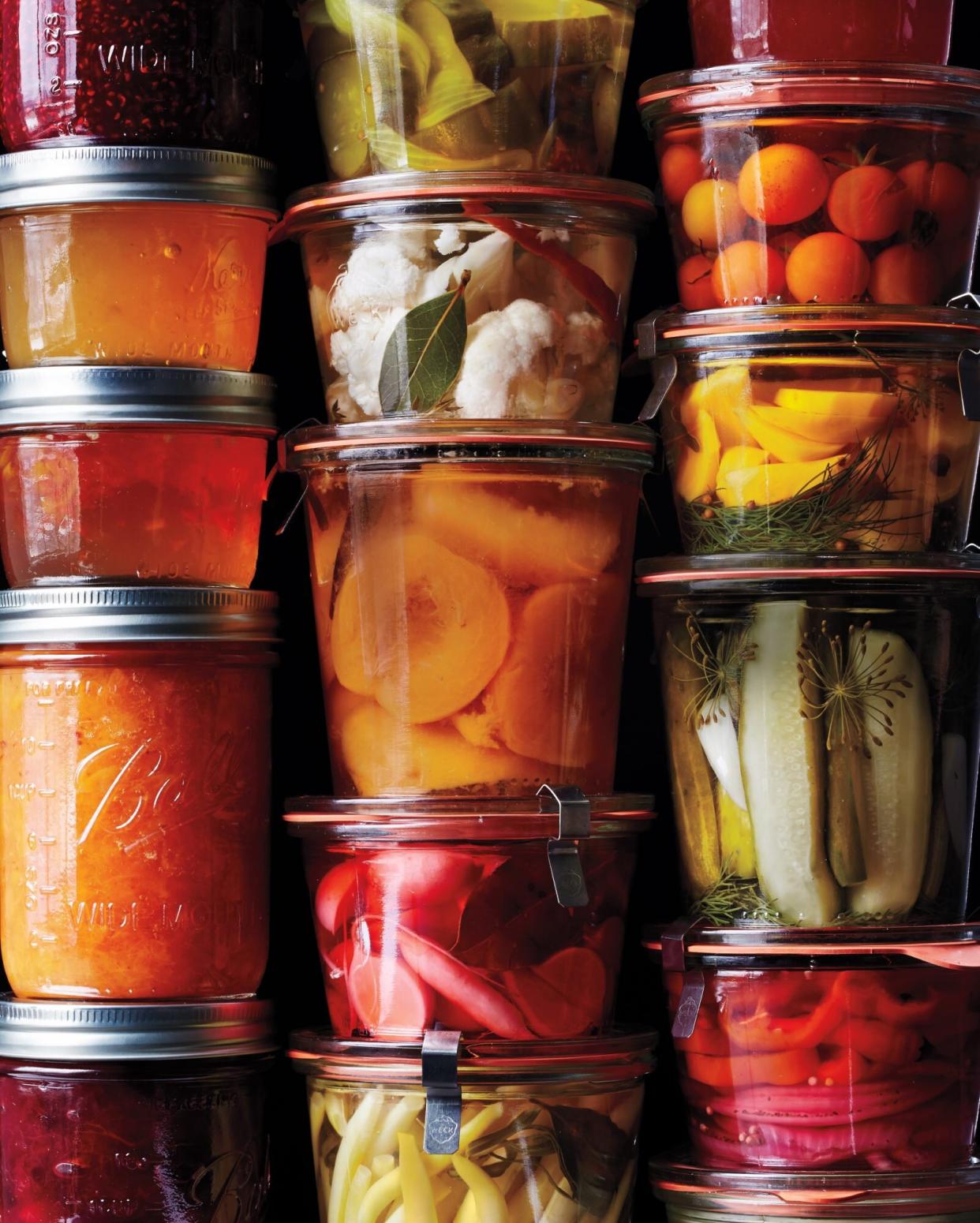Everything You Need to Know About Canning Fresh Fruit and Vegetables This Summer

- Oops!Something went wrong.Please try again later.
Christopher Testani
It's natural to look forward to the change of seasons: winter snow melts away to make room for spring flowers, hot summer days fade into cool fall nights. But what of the bounty each season provides? How can we preserve it to enjoy at a later date? There's truly nothing like being transported back to the mouthwatering flavor of juicy tomatoes at their peak in the middle of January, or spreading that perfect winter citrus marmalade across a piece of toast in July. The answer, of course, is in canning, a time-honored method of food preservation that involves placing foods in jars and heating them to a temperature that kills microorganisms and inactivates enzymes that could cause food to spoil. The heating process pushes air from the jar, creating a vacuum seal as food cools. Here, an expert home canner shares safety tips and inspiration for creating new flavors, plus fun ways to use your home-canned bounty.
Related: Our Step-by-Step Guide to Making and Canning Jam
A Little History
The process of modern canning as a means of food preservation originated in the early 1800s, at the beginning of the Napoleonic Wars. The French government offered a reward to anyone who can devise a way to preserve food for the French armed forces en masse, and so, chef and food scientist Nicolas Appert figured out a solution. Although Appert was the first known person to achieve this on an industrial scale, it's understood that the technique of canning was already being used by homemakers everywhere. Foods that are commonly canned today are jams, jellies, pickles, preserves, and sauces.
The Joys of Canning
"There are two main reasons I love canning," says Jennifer Perillo, professional recipe developer and author of the popular blog In Jennie's Kitchen. "It's the closest one can get to freezing time, capturing fruits and vegetables at the height of their flavor. I also prefer a clean list of ingredients, and canning allows me to control what goes into my jams and jellies, usually just fruit, lemon juice, and sugar."
Tips for Canning Safely
Today, canning is a fun pastime for many people, in addition to serving as a functional process, and the science of safety has come a long way. Petrillo shares a few pointers for safe and successful canning:
* "Always use clean new, unused lids to ensure a secure seal when canning," says Perillo. "I love using mason jars for storing everything so I can easily see what's inside them.
* Leave enough headspace when filling jars. Petrillo explains that overfilled jars may build up pressure and explode.
* Use jars that have been heated in hot water, even if they've been pre-sterilized. Petrillo says this reduces the possibility of any jars breaking or cracking due to temperature fluctuations when adding hot jam or jellies.
Small-Batch Canning
Some home cooks are wary of canning because of the time they think it requires. Petrillo notes that making jams and jellies are great small-batch projects that only take an hour or two to complete—from prepping the produce to processing the jars. "Time—we never have enough of it, right? That was the biggest factor that stopped me from canning before I began about 15 years ago," she says. "I heard stories of friends who canned tomatoes with their families during the summer and it was a weekend-long affair. As the mother of two young children back then, there was no way I could sacrifice two whole days." There's no need to devote entire weekends to making jam, just do one batch or spread the work out over time. "You can build an impressive collection over a few months breaking it down in this smaller, more manageable way throughout the growing season," adds Petrillo.
Unique Flavorings
If you're making jellies, jams, and the like from scratch, you might as well take advantage of the opportunity to invent your own unique combinations. Perillo finds inspiration in her own garden for one of a kind floral flavors. "I harvest violets from the lawn mid-spring and make a syrup with them, which then gets used in my raspberry violet jam," she says. "I do the same with rose petals from my David Austin roses in the garden."
Fun Ways to Use Jellies and Jams
Looking for new ways to use jams and jellies beyond your breakfast toast? Start with your morning mug. "Marmalade is a lovely replacement for sweetener in teas, or simply combined with boiling water for a hot beverage," Perillo says. Pastries and baked goods also provide a perfect outlet. "Homemade pop tarts are always within reach thanks to the jars of jams and jellies in my pantry. I also love making crostatas, an Italian tart made with pasta frolla and jam for the filling."

